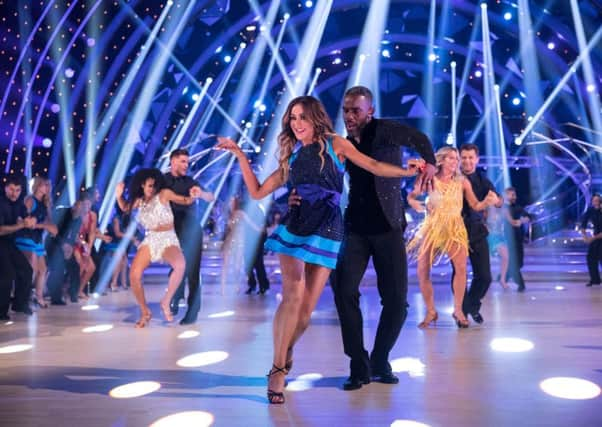Number of Scots dancing for exercise halves in a decade


The Saturday-night Latin swings and high tempo jives appear to have done little to encourage adults across Scotland to don the sequins and take up dancing.
The latest “state of the nation” report into our lifestyles has revealed that participation in dancing among Scots has halved over the past decade. And this is despite physical activity levels across the country reaching a record high, according to the Scottish Household Survey 2017 which was published last week.
Advertisement
Hide AdSome dance clubs around the country have hit back at the figures, insisting that interest has gone “through the roof”.
But the soaring cost of renting facilities for organised dancing, coupled with the cost of lessons, may be a factor in thwarting Scots from getting involved.
Dave Peebles, chairman of Dancesport Scotland, the national governing body for ballroom and Latin dancing which runs competitions across the country, said: “Since probably April the number of people we’ve had coming has actually gone through the roof. So much so that the first time it happened it actually took us by surprise. We had been trying to get more people to come and compete and when they did, we weren’t ready for them which was a really pleasant surprise.”
As well as three open events a year, the body also stages its flagship annual closed championship event in Glasgow. Another bumper turnout is expected today at the Provost trophy day at Falkirk town hall. Numbers have doubled from about 30-40 competitor couples at events in recent years to 50 pre-registrations for today’s event, without counting entrants on the day.
But although there is no shortage of youngsters coming through keen to take up the sport, overall membership of Dancesport Scotland has remained static at about 300.
Part of the problem in attracting new blood to dancing, particularly among adults, is that it require lessons and finding facilities to dance in, then reaching a certain standard before taking part in competition.
Advertisement
Hide AdToby Morris of the Edinburgh Tango Society teaches classes around the capital for older learners and university students. He said: “The real problem for people that want to dance socially is they have to learn – and learning has become an expensive business.”
The cost of hiring a hall has soared up to £40 an hour for a hall, discouraging many organised sports, he said. “There are very few places available for you to actually go and either learn to dance or form a club and go there regularly.”
Advertisement
Hide AdBut he insists that the enthusiasm for dancing among those who do get involved is as strong as ever.
“There are very few people who start it but don’t actually continue it,” Morris said. “It’s a physical conversation and you teach people how to listen to each other. It involves balance and it’s nothing more than walking. You never break into a sweat.”
Just 7 per cent of adults said they had participated in dancing as a form of physical activity in 2017, down from 14 per cent a decade earlier, according to the Scottish Household Survey 2017.
Martin Allan, treasurer of the Edinburgh Ballroom Dancers Association, said membership in 2018 is higher than it has been for the past four or five years, but this was partly down another city club closing.
He admitted there can be problems finding facilities and said the Strictly Come Dancing phenomenon had done little to bring in new members.
“We’re a club for people who are already dancers to a reasonably high standard so it’s not beginners,” he said.